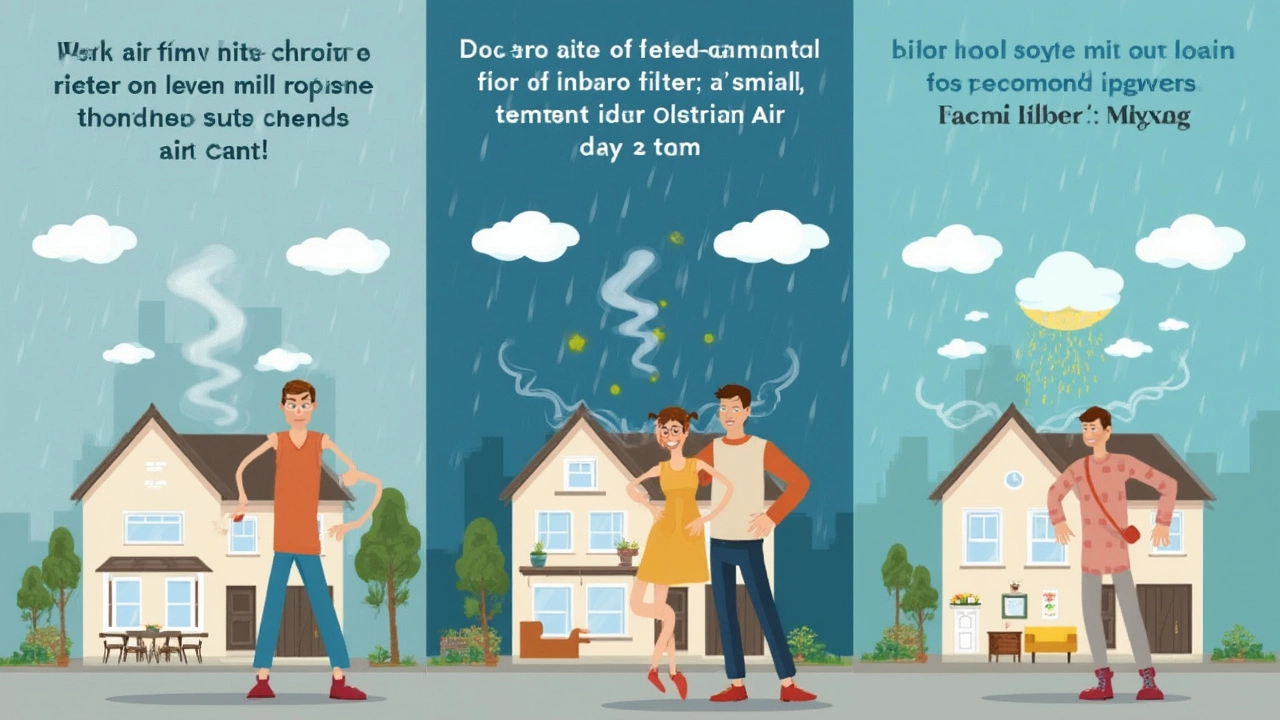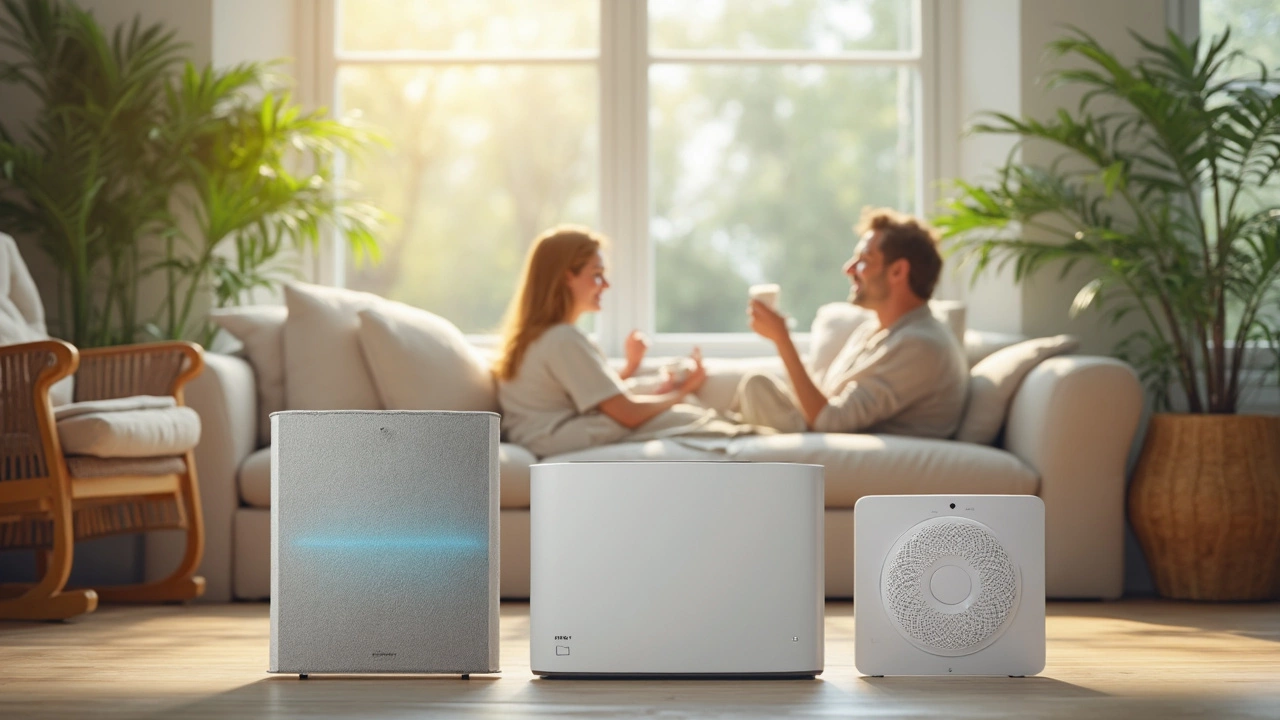Ever get that weird smell when your AC kicks on for the first time in months? Or noticed dust dancing in the sunbeams at home, no matter how much you clean? That’s air quality waving a red flag, and the humble air filter is your first line of defense. But if you’ve ever glanced at the filter aisle and wondered, “Which one of these actually works?”, you’re not alone.
Here’s the reality: not all air filters are created equal. Some are great at trapping hair and big dust bunnies, while others go after microscopic stuff like pollen and mold spores. Knowing the difference can save you money, help you breathe easier, and even protect your gear—like computers and HVAC units—from gunk build-up. Grab a filter too weak, and you’re just moving dirt around. Pick one too powerful (without the right system), and your unit might struggle to push any air at all.
It’s all about picking the right filter for your space, your needs, and yes, your budget. Understanding the three main types makes that decision way easier, whether you’re outfitting a small apartment or a whole office building. Let’s break them down, minus the jargon, so you know exactly what’s worth your money.
- Why Air Filters Matter More Than You Think
- Mechanical Air Filters: The Classic Choice
- Electronic Air Filters: High-Tech Particle Catchers
- Hybrid Air Filters: Best of Both Worlds?
- Choosing the Right Filter for Your Space
- Air Filter Maintenance: Tips That Make a Difference
Why Air Filters Matter More Than You Think
Most folks think about air filters only when the vent starts blowing out weak, stale air or when allergies flare up. The truth? A good air filter does a lot more than stop dust. It grabs stuff you can’t even see—bacteria, mold spores, pet dander—that can mess with your breathing, make allergies worse, and even stink up your place.
Here’s a fact that surprises people: the EPA has said that indoor air can sometimes be up to five times dirtier than outdoor air. Why? Because all that stuff—cooking smoke, spray cleaners, fur, pollen—gets trapped inside, and unless your filter is up to the task, it just keeps recirculating.
Modern homes and offices are well-sealed to save on energy bills, but that makes it easier for fine particles and pollutants to hang around. And if you or someone at home has asthma or allergies, choosing the right types of air filters is serious business. It’s not just about comfort, but long-term health.
If you use an HVAC system, a clogged filter strains the blower so it works harder and burns more power. That means higher electricity bills and more wear on your gear. Changing out or upgrading your air filters isn't just a nice-to-have. It actually helps your system last longer, saves money, and keeps the air fresher—even if you don’t notice the difference day to day.
| Common Air Filter Benefits | Impact |
|---|---|
| Traps Dust and Allergens | Reduces sneezing and allergic reactions |
| Improves Airflow | Saves energy, helps HVAC run smoother |
| Protects Appliances | Prevents dust build-up inside units |
| Removes Odors | Keeps rooms fresher |
So yeah, air filters might not be flashy, but they matter way more than most people realize. You wouldn’t ignore dirty water coming out of your tap—so why put up with dirty air?
Mechanical Air Filters: The Classic Choice
If you have heating or cooling in your home, you’ve used a mechanical air filter before—probably without even thinking about it. These are the go-to filters for most homes and small businesses. They're designed to physically trap dust, pollen, pet hair, and other particles as air passes through a mesh or web of fibers. The most common types you’ll see on store shelves are fiberglass and pleated filters.
Fiberglass filters are as basic as it gets. They're cheap, usually less than a cup of coffee, and do a fair job keeping big stuff like lint and dust from clogging up your system. But don’t expect miracles—these won’t catch the tiny stuff that can make allergies a nightmare.
Pleated filters, on the other hand, are built with more surface area, kind of like a mini accordion. That extra material means they grab more particles—think pollen, dander, even some mold spores. Plus, they tend to last longer than the basic fiberglass kind. Look for the MERV rating when you shop: it stands for Minimum Efficiency Reporting Value. A MERV 8 filter is usually fine for most homes, while MERV 11-13 is better if you’ve got allergy issues or pets tearing around the house.
| Type | Pros | Cons |
|---|---|---|
| Fiberglass | Cheap, easy to find, works for big particles | Misses small particles, needs frequent changing |
| Pleated | Better filtration, lasts longer, helps with allergies | Costs more, may restrict airflow if not changed |
One smart tip: don’t just leave your filter in until you remember it! Check it monthly, especially if you have pets, and swap it out every 1-3 months. A clogged filter makes your HVAC work harder, burning more power and costing you extra on your energy bill.
Mechanical air filters are a solid first step in controlling indoor air quality, and sometimes that's all you need. But if you’re aiming to zap the smallest particles or knock out germs, you may want to mix it up with other air filter types. We’ll get to those next.
Electronic Air Filters: High-Tech Particle Catchers
When it comes to blasting airborne junk out of your home’s air, electronic air filters go way beyond basic dust screens. These are the gadgets that use a bit of science—static electricity, to be exact—to snatch up particles regular filters can miss. Think smoke, bacteria, and the smaller stuff that really messes with your allergies. They’re not magic, but close.
So, how do they actually work? Electronic air filters have two main types: electrostatic precipitators and ion generators. Here’s what sets them apart:
- Electrostatic Precipitators: Air moves through electrically charged plates or wires. Those particles you want to avoid—dust, pollen, pet dander—get a charge too and get stuck to collector plates like iron filings on a magnet. You just wash off the plates every few months.
- Ion Generators: Instead of collecting particles, these send out charged ions into the air. The ions attach to dust and allergens, which then stick to nearby surfaces, sometimes right onto your walls or furniture. Not everyone loves this side effect, but the air does test cleaner.
Here’s something useful: According to some independent lab results from the Environmental Protection Agency (EPA), electronic air filters can trap up to 95% of particles as small as 0.3 microns. For context, regular house dust can be up to 100 microns wide, so these filters catch the tiny stuff you can’t even see.
| Type | What It Captures | Maintenance |
|---|---|---|
| Electrostatic Precipitator | Dust, smoke, pollen, mold spores | Wash collector plates regularly |
| Ion Generator | Ultra-fine particles | Clean surfaces more often |
On the plus side, these filters don’t block airflow like thick HEPA or MERV filters sometimes do, so your HVAC doesn’t have to work as hard. Many top-end air purifier filters use this tech, alone or mixed with others.
But here’s a pro tip: If you have anyone with asthma or sensitive lungs in your home, check if the filter produces ozone as a by-product. Ozone isn’t great for your health, and not every device is created equal. Look for models certified as low-ozone or ozone-free for peace of mind.
Electronic filters cost more up front, but they last a long time since you can wash and reuse parts instead of buying new filters every few months. If you like seeing instant results, electronic filters often have a light or gauge that shows when it’s time to clean. Handy for forgetful folks (like me) who never remember to change their HVAC filters until half the vents are clogged.

Hybrid Air Filters: Best of Both Worlds?
If you’ve ever felt like standard filters leave something on the table, hybrid air filters could be what you’re after. These combine features from both mechanical filters (like HEPA) and electronic filters into one, aiming to catch both the big and tiny stuff flying around in your air. Some even throw in an activated carbon layer to help with odors—handy for homes with pets or if you just cooked fish for dinner.
The most common types of hybrid filters used in home air purifiers and HVAC systems mix a HEPA-style media filter with an electronic component. The mechanical side catches dust, dander, and pollen, while the electronic side (like ionization or electrostatic tech) targets microscopic particles and some bacteria or viruses. Throw in activated carbon and suddenly it’s handling smelly stuff and smoke, too.
Here’s a quick peek at what a typical hybrid air filter might offer compared to single-type filters:
| Filter Type | Dust & Pollen | Bacteria & Viruses | Odor Removal | Maintenance |
|---|---|---|---|---|
| Mechanical (HEPA) | Excellent | Good | Poor | Replace regularly |
| Electronic | Good | Great | Poor | Clean plates |
| Hybrid | Excellent | Great | Can be excellent (with carbon) | Replace filter, sometimes clean plates |
The catch? Hybrids aren’t always cheap. They can cost double (or more) compared to standard air filters. And you still have to keep up with maintenance—if you let the filter get clogged or ignore the washable parts, performance tanks fast. Another thing: not every hybrid filter is a miracle worker. Look for actual certifications, like true HEPA (not “HEPA-type,” which is just marketing lingo), and check that it fits your system’s airflow limits.
If allergies, pets, or odd smells are giving you a headache, investing in a hybrid air filter for your HVAC or purifier might be worth every penny. Just remember, they still need cleaning or replacing on schedule if you want them to work the way they promise.
Choosing the Right Filter for Your Space
If you walk into a store or search online, air filters are everywhere. The big brands love to toss around words like HEPA, MERV, and “ultra efficiency.” Honest truth? What you actually need depends on your space and what’s floating around in it. Let’s break this down in a way that really helps you make sense of the shelf overload—so you get the air filter that fits your needs, not just what the marketing department wants to sell you.
First, check your system. Not every HVAC or air purifier can handle all types of filters. Some units work best with standard fiberglass filters, while others can fit a chunky HEPA upgrade. Always look at what your equipment can handle. If you force-fit a beefy filter into a weak fan system, your airflow drops and your power bill jumps.
Second, think about your life. Got allergies? Pets? Live in a city with a smog problem? You’ll want a filter that scores high on the MERV scale—ideally between 8 and 13 for typical homes. Higher MERV numbers mean finer filtration, but go too high, and you can choke your HVAC system. Here’s a quick tip: most home systems hit the sweet spot at MERV 8 to 11, which grabs dust, pollen, and some mold spores.
Commercial spaces, medical offices, or homes with severe asthma might need special filters—think MERV 13 and up or a full-on HEPA filter (which traps 99.97% of particles down to 0.3 microns). Remember, HEPA means business, but it’s usually for standalone air purifiers or high-end air handling units, not your average central AC.
Don’t forget cost and replacement intervals. Mechanical air filters like fiberglass or pleated models are affordable and work for general dust and debris, but you’ll have to switch them out every 1–3 months. Electronic air filters cost more up front but last longer and can pull ultrafine stuff from the air. If you DIY, always make sure the filter fits snug—sneaky gaps just let junk slip past.
| Filter Type | Best For | Replacement |
|---|---|---|
| Fiberglass | General dust, basic protection | 1 month |
| Pleated (MERV 8-13) | Allergies, pets, pollen | 2-3 months |
| HEPA | Asthma, medical, fine particles | 6-12 months (purifiers) |
| Electronic | Ultrafine particles, smoke | Washable (check monthly) |
Another thing: size matters. Always match your filter to the exact dimensions your system needs. Too small, and air slips around the edges. Too big, and the filter won’t fit.
Pick smart, and you’ll breathe better, sweat less over bills, and maybe even stretch the life of your gear. If in doubt, scratch down your system’s model number and check its manual or website. Most brands have a table or wizard that tells you exactly which air filters are a match.
Air Filter Maintenance: Tips That Make a Difference
Neglecting your air filters is like never changing the oil in your car. Sooner or later, things stop working right. Dirty filters wreck airflow, make your AC or furnace work overtime, and let allergens sneak back into your space. Most folks forget about this until they notice dust building up or their utility bill creeping up. Stay ahead of the game with a few simple habits.
- Change or clean filters regularly. Every 1–3 months is a solid rule of thumb for most homes, but big families or homes with pets might need fresh filters even more often. Mark your calendar or set a phone reminder—seriously, it helps.
- Know your filter type. Not all HVAC filters are meant to be cleaned; some are straight-up disposable. HEPA and pleated filters need replacing, while some electronic and hybrid ones are washable (just make sure they’re totally dry before reinstalling).
- Check the fit. An ill-fitting filter lets unfiltered air squeeze right by. Pop the filter cover and make sure everything’s snug and flush. If it looks warped, swap it out.
- Watch out for damp spots or mold. If your filter looks fuzzy or has a musty smell, that’s mold—replace it fast. Mold in your filter can blast spores all over your house.
- Track your air quality. If anyone at home has allergies, a smart air quality monitor can tip you off when it’s time to change your filter, instead of just guessing.
| Household Type | Change Interval |
|---|---|
| Pet-free, no allergies | Every 3 months |
| With pets | Every 1-2 months |
| Allergy sufferers | Every 1-2 months |
| Heavy use or smokers | Monthly |
Don’t wait until your HVAC blows weak air or your allergies go nuts. A few minutes once a month checking your air filters can keep your system running smooth and your air a whole lot cleaner. If you live somewhere with a lot of dust or you run your system constantly, keep a couple of backup filters handy—no one wants to make a mad dash to the hardware store at midnight.

